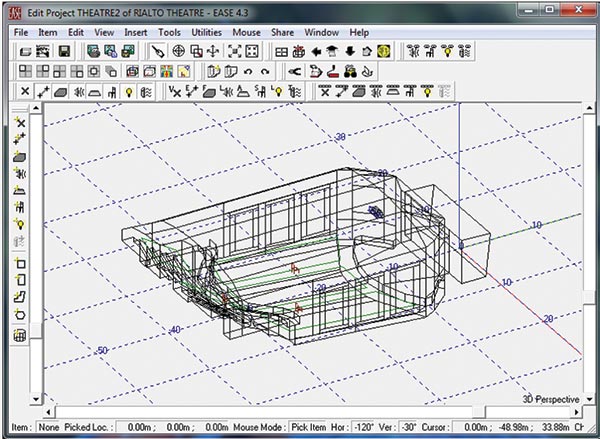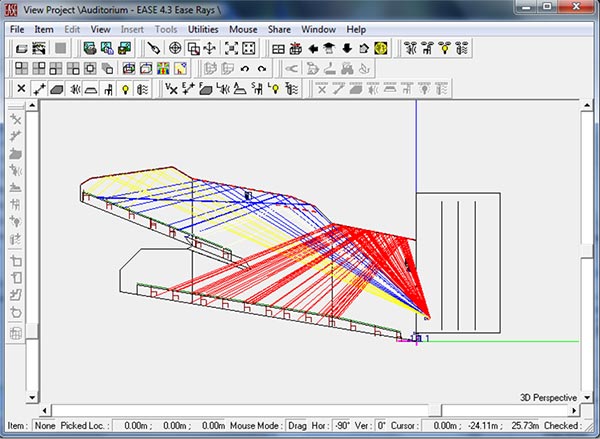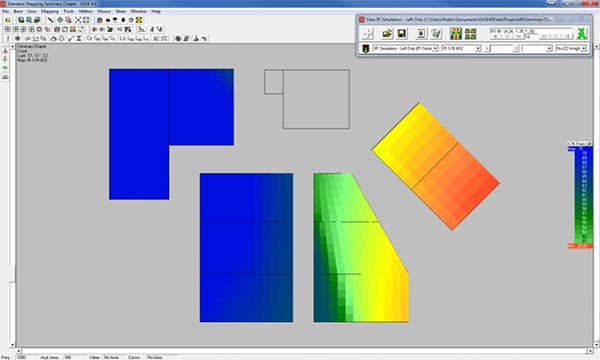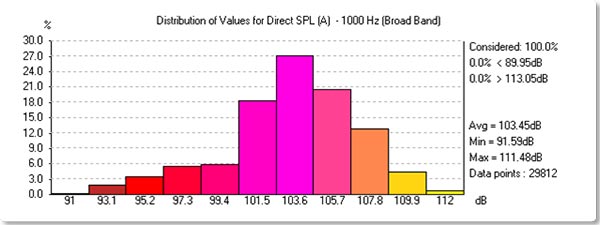Acoustic Simulation Software for Integrators, Engineers & Acoustical Consultants
Auditoriums have witnessed a recent growth in number in India and the number keeps growing. One can now find Auditoriums in various facilities like universities, research institutes, schools, clubs, colleges, government infrastructure. With these new and upcoming auditoriums, there is a serious need for a designing software to assist the Integrators, engineers and Acoustical consultants during the planning of any auditoriums. In this feature, AV-ICNx highlights- E.A.S.E software, a tool that comes in handy during the designing and planning stage.
Enhanced Acoustic Simulator for Engineers or better known as EASE is a simulation of electro-acoustic systems and room acoustics which can be used by acousticians, consultants, specifying engineers, installation companies and other professionals.
Benefits of EASE simulation:
Easy calculations by the industry standard electro-acoustical simulation software.
Helps with awareness of obstacles that would remain hidden without simulation.
Effortless analysis and solving of acoustical problems before they arise.
Quick access to the largest and highest quality loudspeaker database to find the optimal solution.
The EASE software is multi-featured, thus improving the quality of acoustical simulation as a whole. Some key features include:

Standard Mapping with Reflections
Features
Built-in drawing module for construction of a 3D acoustical model
Using the EASE modeling tools an acoustical model can be built quickly. Closed rooms can be modeled in addition to open spaces, such as arenas and stadiums. Creation of vertices, lines, surfaces, groups and a number of object and room templates. They also have automated functions for insertion of multiple items and tables for editing or comparing multiple items.
The room can be viewed and rendered in a number of different ways. This is particularly helpful when constructing more complicated room models.
Database of acoustic materials
EASE contains an extensible database with more than 700 different acoustic materials including commercial absorbers! The databse makes it easier to create and add materials to the program catalog with the Wall Material Database module or modify existing data sets at any given time.
Standard room parameters:
The software makes it easy to calculate standard room parameters like room volume, Effective surface area, Total surface area, Mean free path length, Average absorption coefficients, Material coverage statistics and much more. In addition it can also determine the distance and sound propagation time between any two points in the model.

Built-in drawing module for construction of a 3D acoustical model
Reverberation time calculations
One of the first calculations to be performed, after having completed the acoustical model building, is the reverberation time. The software can immediately display the calculated figures based on Eyring or Sabine formulae and use it for a number of related simulations. This intuitive Optimize Reverberation Time tool helps to save valuable time, avoiding the need to experiment with different wall material on different surfaces to adapt the model to real-life requirements.

Reflection Pattern Studies with Ray Tracing
Database of sound sources
The software allows to Perform accurate electro-acoustic simulations with high-resolution sound source models based on real life systems.
Virtual sound system control:
The software enables Full virtual sound system control at your fingertips which includes individual loudspeaker controls, such as, Level and Gain, Delay Time, Driver Alignment, Filters, Phase, Polarity, Position X, Y, Z, Electrical Input Power and Extended controls (mechanical, electrical and physic parameters).
Loudspeaker clusters:
Calculation times can have a significant effect over the overall design time budget, depending on the project complexity. The Cluster Calculation module is one of the services provided by EASE to help handle such situations by, for instance, combining closely spaced sound sources in a single loudspeaker cluster. After the combination is done only a single resulting loudspeaker object remains, representing the combined sources. The reduced number of sources allows the loudspeaker system to be handled more easily in a large room model and also reduces computation times.
Standard Mapping:
The Standard Mapping feature which allows a large number of simulations to be performed based on the diffuse field assumptions of statistical acoustics. Standard Mapping makes use of Eyring or Sabine statistical formulas to generate RT figures that will be used to calculate some acoustical parameters, such as the STI (Speech Transmission Index) and the Total SPL. Measured RT data can also be used for this type of mapping.

IR Devices Simulation Module
Statistical tools:
Maximum and minimum values, standard deviation, average and distribution graph are some of the statistical resources that you can use to optimize the system performance as well as to illustrate the simulation results.
In particular, tenders often ask for coverage figures, such as an STI of 0.5 or better for 90% of the area of interest. Software like this have such information available on a single mouse click. Distribution graphs can be viewed for all frequencies and all kinds of acoustic results.
Reflection pattern studies with Ray Tracing
A sound source generates an impulse: a number of particles (or rays) are released into the room, propagating at the speed of sound. As they travel, they lose energy due to air absorption, which is especially noticeable at higher frequencies. Eventually a particle hits a room boundary - or an obstacle - loses more energy, and is reflected back to the room, in an iterative process.
The program keeps track of each particles path, energy and time, until pre-determined limits are reached (such as propagation time, reflection order or energy loss). This tool stores information about all reflections so that, ray by ray, you can identify potential geometry problems and evaluate possible solutions. Ray tracing is also a great presentation tool for demonstrating complicated acoustic problems very intuitively.

Statistical Tools for Enhanced Evaluation of Simulation Results
Room RT:
The Local Decay Time feature of EASE allows you to perform a quick check of local Reverberation Time figures through a special Ray Tracing technique, producing more accurate local results than the statistical formulas in a short time frame. The calculations can be performed at several locations in the room simultaneously.
How it works:
The software sends out a customizable number of rays from the selected listener positions. As the rays travel through the room, the program keeps track of their energy and time. Each ray is computed for 60 dB loss and averaged with all other rays. This average is then used to predict the Local Decay Time at each specific location.
In-depth reflection analysis:
The (find) Ray Tracing Impacts feature is a stochastic approach to model the propagation of sound in the room, giving the opportunity of performing a comprehensive analysis of reflections that are detected at specific spots – i.e. at Listener Seat locations.
IR Devices simulation module:
The Infrared (IR) extension module allows to simulate the performance of infrared communication systems and devices, such as Transmitters and Modulators in a similar way as for sound systems and loudspeakers.
The Software is capable of simulating the direct radiation of such devices and of computing figures for the signal-to-noise ratio. EASE InfraRed also provides a receiver database. Using specific InfraRed receivers is especially helpful to allow evaluation of local SNR using these specific receivers.
Powerful presentation tools:
In addition to the power of auralizations as a presentation tool, EASE includes a dedicated Architectural rendering module called Vision. Vision delivers enhanced graphical presentations due to its light and textures rendering capabilities, being able to generate photo-realistic images. The Texture and Light databases in EASE are fully customizable, letting your creativity free to produce amazing drawings, including light reflections, transparency, colors, background images and different light sources!